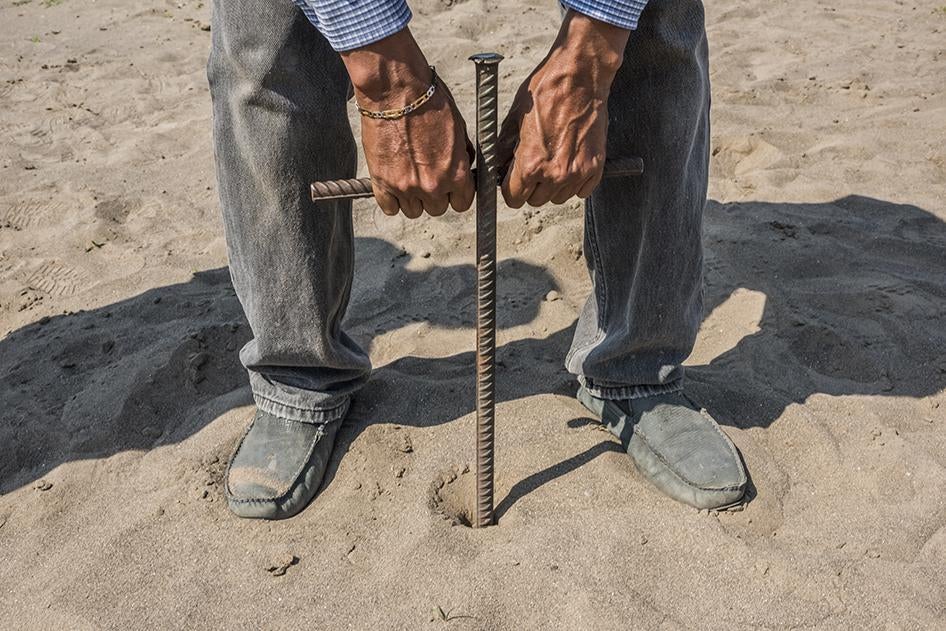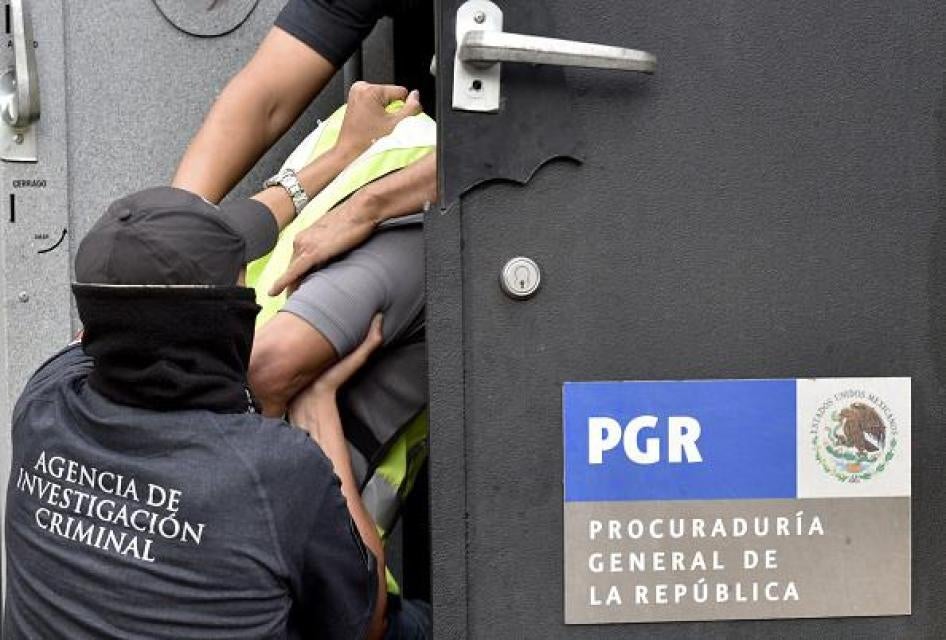Mexico: Lessons from a Human Rights Catastrophe

Mexico’s president, Andrés Manuel López Obrador, has inherited a human rights catastrophe involving extreme violence by organized crime, widespread abuse by the military, police, and prosecutors, and pervasive impunity for both. His predecessor, President Enrique Peña Nieto, initially tried to ignore these problems. But ongoing atrocities provoked public outrage and forced him to support reforms that could help curb abuse—if they are ever properly implemented. This series of articles examines Peña Nieto’s human rights record—what went wrong, where limited progress was made, and how the current administration can do a better job of containing the carnage and strengthening the rule of law in Mexico.
1. The Militarization of Public Security
2. Violence and Opacity
3. Torture and Historical Truth
4. Forced Disappearance, an Ongoing Crime
5. The Other Disappeared
The Other Disappeared
On January 15, President Andrés Manuel López Obrador will install a “Truth and Justice Commission” to assist the families of the 43 students from the Ayotzinapa teachers college who were disappeared in Iguala, Guerrero, in 2014. It was fitting—and commendable—that the decree establishing this important initiative was one of the official acts of his presidency in December. It was also fitting that the parents of other disappeared people stood outside the ceremony demanding that his administration address their cases as well.
The disappearance of students in Iguala shocked the conscience of Mexico—and the world—in a way few atrocities in the country have before it. The impact was due to the large number of victims, the fact they were students, the police participation in their abduction, and the authorities’ inability or unwillingness to find them. But also fueling the public outrage was the fact—which became abundantly clear almost immediately—that this horrific crime was not an isolated incident.
Far from it. Under intense pressure to find the students, the federal prosecutors’ office followed leads to clandestine graves near Iguala and, within a few weeks, exhumed 39 bodies. None were the students. The public attention to the disappearances prompted other people in Guerrero to speak out about their own missing loved ones. Families demanded investigations or began their own searches. Some banded together to form a collective called “The Other Disappeared of Iguala.” Their efforts have led to the exhumation of 168 bodies. READ MORE:
Forced Disappearance, an Ongoing Crime
Torture and Historical Truth
In March 2015, two years into Enrique Peña Nieto’s presidency, the UN human rights expert Juan Méndez reported that torture was “generalized” in Mexico. The government responded by attacking Méndez. The then-foreign minister, José Antonio Meade, called him “irresponsible and unethical” for publishing findings “he could not back up.” What made this ad hominem attack so remarkable was that the UN expert’s findings—while deeply troubling—were in fact so very unremarkable. Few Mexicans would have been surprised by his conclusion regarding the prevalence of torture in their country.
The government sought to justify its attack on Méndez by claiming that his report cited only 14 specific cases of alleged torture. It’s possible that adding more concrete cases to complement the quantitative data and other information already included in the report could have made the findings even more convincing—if, indeed, anyone actually needed convincing. But, as the Peña Nieto administration knew perfectly well, there was ample evidence to back the UN expert’s conclusion.
In 2011, a year before Peña Nieto took office, Human Rights Watch (HRW) issued a comprehensive report on abuses by Mexican security forces that received extensive media coverage, including on the front pages of the country’s leading papers. We documented the systematic use of torture in more than 170 cases. Tactics varied: there were beatings, electric shocks, asphyxiation, death threats, sexual assault. So did the torturers: they were federal, state, and municipal police; soldiers and sailors; federal and state prosecutors. READ MORE:




